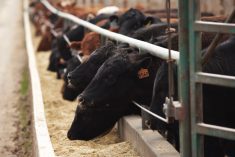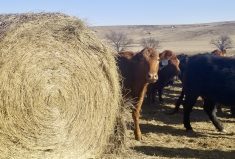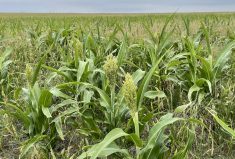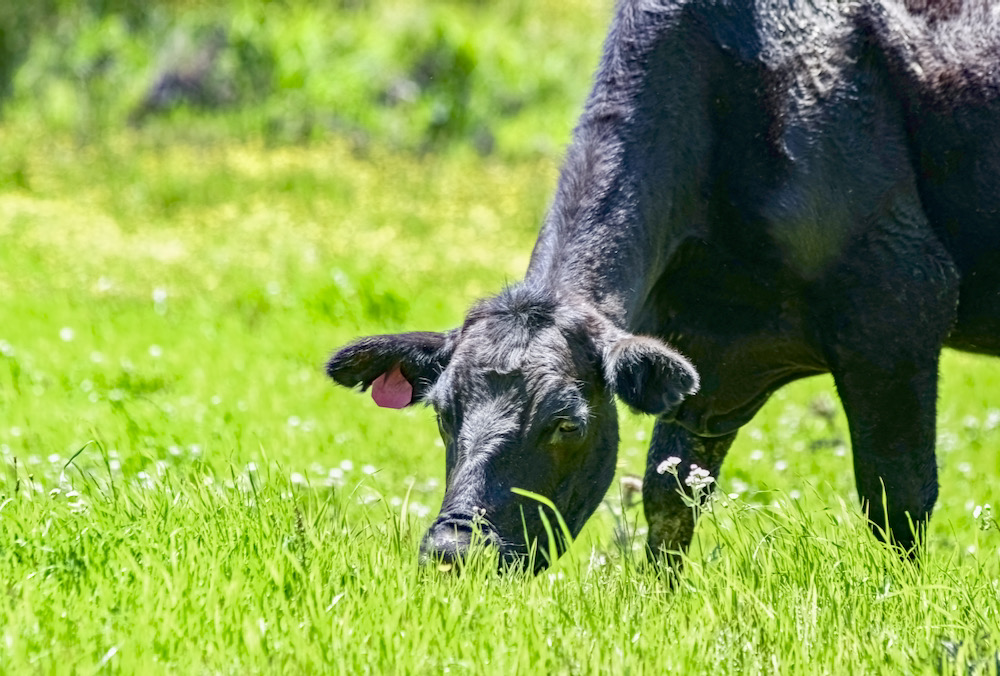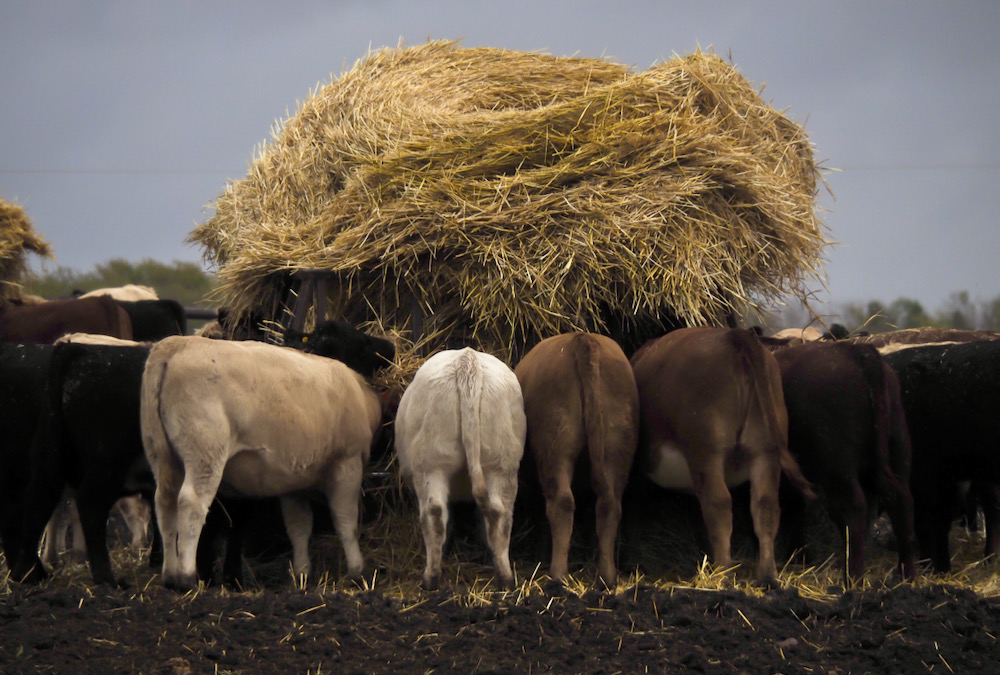Cattle producers looking for feed sources this year may have a silver lining in recent trade spats.
They should consider feeding hard-to-market North Dakota soybeans to beef cattle, North Dakota State University Extension livestock experts say.
Soybeans can be used as a protein supplement for beef cattle, as long as the beans are a small part of the cattle’s diet, according to Karl Hoppe, extension livestock systems specialist at NDSU’s Carrington Research Extension Center.
“Whole soybeans typically contain about 40 per cent protein and 20 per cent fat,” he says. “Nutrient analysis is recommended on soybeans prior to feeding to correctly balance rations.”
Read Also

Pig transport stress costs pork sector
Popular livestock trailer designs also increase pig stress during transportation, hitting at meat quality, animal welfare and farm profit, Agriculture and Agri-Food Canada researcher says
Researchers have found that when the oil content of the ration exceeds seven per cent, it can be toxic to the microbes in the cattle’s rumen and decrease digestibility. Too much oil in cattle rations will lead to scours (diarrhea), cessation of rumen fermentation and, eventually, death.
“Because of these limitations, the recommended upper limit of feeding would be about 20 per cent of the ration,” Hoppe says. “Practical feeding levels are probably more like two to three pounds per head per day. At this low rate of supplementation, soybeans provide an excellent source of protein and energy.”
For example, he recommends feeding 2.5 pounds of soybeans if the ration requires an extra pound of crude protein to meet protein requirements. For a 1,400-pound cow eating 40 pounds of feed, whole soybeans are about six per cent of the ration.
Cattle are better able to tolerate whole soybeans than swine. Whole beans contain anti-nutrition factors, or substances that reduce the use of nutrients or food intake, which affects livestock’s growth. The beans need to be heat treated, which inactivates these substances.
Heat treatment can be done by extruding (processing) or roasting. Soybean meal is heat treated during the oil extraction process.
“Mature cattle appear to not be affected by the same anti-nutrition factors as swine,” says John Dhuyvetter, Extension livestock systems specialist at NDSU’s North Central Research Extension Center. “However, unprocessed soybeans should not be fed to young calves under 300 pounds.”
Also, producers should not use raw soybeans in conjunction with protein tubs, blocks or other supplements containing urea. Soybeans contain urease, which breaks down rapidly into ammonia. The combination of urea-containing products and soybeans can lead to ammonia toxicity and death.
Green soybeans, which are beans that are harvested early or frost damaged before they can become mature, also can be fed to cattle at low rates in the ration, says Janna Kincheloe, Extension livestock systems specialist at NDSU’s Hettinger Research Extension Center. However, mycotoxins can be a problem in damaged soybeans.







